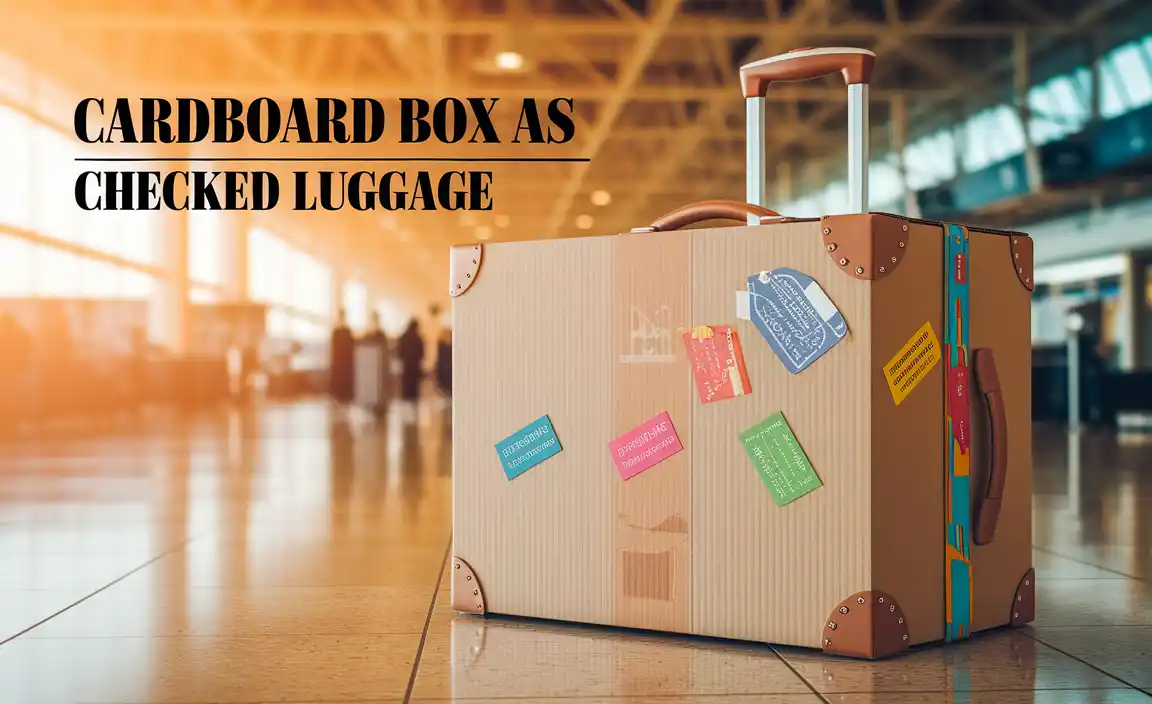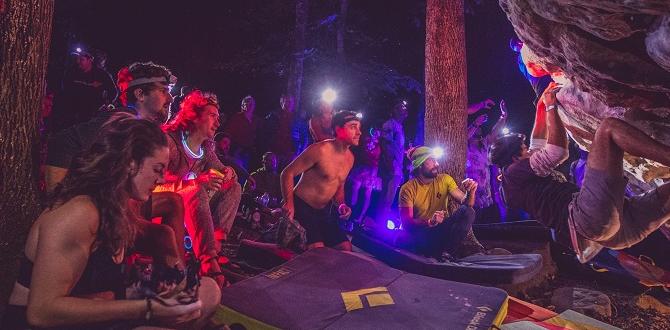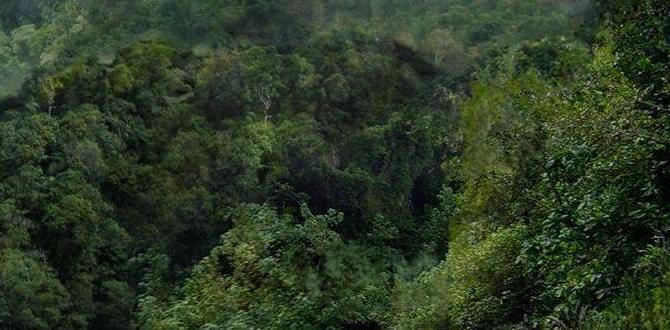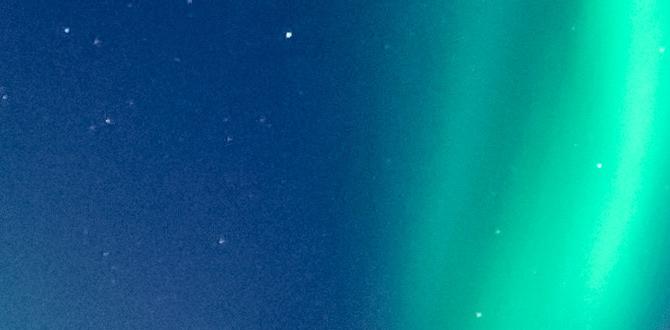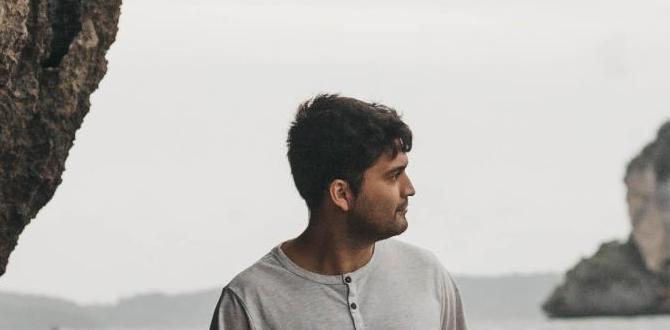Planning an Atacama Desert summer trip? This guide is your essential resource for a comfortable and unforgettable adventure. We’ll cover packing, weather, activities, and essential tips to make your journey seamless, ensuring you’re well-prepared for the driest place on Earth during its warmest months.
The Atacama Desert is a dream destination for many, packed with otherworldly landscapes. Planning a summer trip, however, can leave you wondering about the best way to pack and prepare. Will it be too hot? What should I bring for the arid conditions? These are common questions, and getting the right advice makes all the difference.
Don’t worry; a brilliant trip to the Atacama is absolutely achievable with a little insider knowledge. We’ll walk you through everything you need to know, from beating the heat to navigating the unique environment, so you can focus on the awe-inspiring sights ahead.
Understanding Atacama’s Summer Climate
When we talk about “summer” in the Atacama Desert, it’s important to be specific. The Atacama is vast and experiences varied microclimates. However, the most common tourist hubs, like San Pedro de Atacama, experience their warmest and driest period roughly from December to February. This is Chile’s summer season.
What to Expect: Heat and Sun
Prepare for significant daytime temperatures, often soaring well above 30°C (86°F) in the hotter valleys and lower altitudes. The sun’s intensity is a major factor. At high altitudes, the atmosphere is thinner, meaning UV rays are stronger. Even on cloudy days, direct sun exposure can be harmful if you’re not protected.
Nighttime Temperatures
While days are hot, nights can cool down considerably, especially at higher elevations. Desert nights can drop to around 10-15°C (50-59°F). This temperature fluctuation is a key consideration for packing and planning activities that might extend into the evening.
Humidity and Rain (or Lack Thereof)
The Atacama is famously one of the driest places on Earth. Rainfall is extremely rare, especially during summer. You can practically guarantee sunshine and clear skies for stargazing. The lack of humidity means that sweat evaporates quickly, which can be deceptive – you might not feel as hot as you are. This also means protecting your skin and staying hydrated is paramount.
Essential Packing List for Your Atacama Summer Trip
Packing smart is crucial for comfort and to make the most of your adventure. Think layers, sun protection, and practicality.
Clothing: Layers are Key
- Lightweight, Breathable Tops: T-shirts, long-sleeved shirts made of quick-drying fabrics (like polyester blends or merino wool) are ideal. Long sleeves are great for sun protection during the day.
- Comfortable Trousers/Pants: Convertible pants that zip off into shorts are versatile. Lightweight, durable hiking pants are excellent for both protection and ease of movement.
- Shorts: Good for the hottest parts of the day if you prefer.
- Warm Layer: A fleece jacket, a lightweight down jacket, or a warm hoodie is essential for cool evenings and early mornings, especially for stargazing tours or visiting high-altitude areas.
- Rain Jacket (Lightweight): While rain is rare, a light, windproof, and waterproof jacket can be useful for unexpected weather shifts or as an extra windbreaker.
- Swimsuit: Some accommodations have pools, and there are natural hot springs in the region.
Footwear: Comfort and Support
- Sturdy Walking Shoes/Hiking Boots: You’ll be doing a lot of exploring, from salt flats to rocky trails. Comfortable, broken-in footwear with good ankle support is a must.
- Sandals or Comfortable Shoes: For relaxing at your accommodation or shorter strolls.
- Socks: Moisture-wicking socks are essential to prevent blisters. Bring several pairs.
Sun Protection: Non-Negotiable
The Atacama sun is intense. Don’t underestimate it!
- High SPF Sunscreen: Choose broad-spectrum sunscreen with SPF 30 or higher. Reapply frequently, especially after swimming or sweating. It’s wise to pack more than you think you’ll need. Brands with physical blockers like zinc oxide and titanium dioxide can offer excellent protection.
- Wide-Brimmed Hat: A hat that shades your face, neck, and ears is vital.
- Sunglasses: Polarized sunglasses are best for reducing glare, especially around salt flats and water.
- Lip Balm with SPF: Lips can easily get sunburned and dry.
- UV-Protective Clothing: Consider clothing with a UPF (Ultraviolet Protection Factor) rating for added safety.
Accessories for Comfort and Convenience
These items will significantly enhance your comfort and preparedness.
- Reusable Water Bottle: Staying hydrated is critical. The environmental impact of single-use plastic is also a concern, making a reusable bottle a necessity. Look for insulated bottles to keep water cool longer.
- Daypack: A comfortable backpack for carrying water, snacks, sunscreen, a camera, and extra layers during daily excursions.
- Camera & Extra Batteries/Power Bank: You’ll want to capture the stunning scenery. Desert conditions can drain batteries quickly. A portable power bank is a lifesaver.
- Headlamp or Small Flashlight: Invaluable for early morning departures, late-night stargazing tours, or navigating unlit paths.
- Personal Hygiene Items: Hand sanitizer, tissues, and any personal medications. Given the dry air, consider a small moisturizer and lip balm.
- Adult Diapers or Protective Underwear (Optional but Recommended for Long-Haul Comfort): For longer travel days, bus tours, or even just during extended excursions in remote areas, having comfortable and reliable adult diapers or protective underwear can offer peace of mind and prevent discomfort. Brands like Depend or Tena offer discreet options that are breathable and absorbent, ensuring you stay dry and comfortable without worry. Having these on hand provides an extra layer of security, especially for those who may experience incontinence or simply want added protection during active days.
- Child Diapers/Pull-Ups for Kids (Essential for Families): If traveling with young children, packing ample child diapers or pull-ups is non-negotiable. The dry, dusty environment means frequent changes can be necessary. Ensure you have enough for the entire trip, plus a few extra for delays. Brands like Huggies or Pampers offer good absorbency for active kids.
- Insect Repellent: While not a major issue in the driest parts of the desert, some areas near oases or at certain times of year can have mosquitoes. It’s sensible to pack a small bottle.
- Binoculars: Great for spotting wildlife or getting a closer look at distant geological formations.
Planning Your Itinerary: Must-See Atacama Experiences
The abundance of unique geological features and phenomena makes the Atacama a truly special destination. Here are some highlights to consider for your summer trip.
Geysers del Tatio
These are the third-largest geyser field in the world. You must book a tour that departs well before dawn. The best time to see the geysers is at sunrise when the cold morning air (often below freezing even in summer at this altitude) interacts with the hot steam, creating spectacular plumes. The altitude here is over 4,300 meters (14,000 feet), so take it easy and stay hydrated.
Moon Valley (Valle de la Luna) and Death Valley (Valle de la Muerte)
These iconic landscapes offer surreal, moon-like geological formations, salt crusts, and sand dunes. They are particularly stunning at sunset when the colors of the rocks and sand shift dramatically. Be prepared for walking on uneven terrain.
Salar de Atacama (Atacama Salt Flat)
The largest salt flat in Chile, this vast expanse of white is breathtaking. You can visit Laguna Chaxa, a salt lagoon that is part of the Los Flamencos National Reserve, and see various species of flamingos feeding. The heat reflecting off the salt can be intense, so sun protection is paramount.
High-Altitude Lagoons (Lagunas Altiplánicas)
Picturesque high-altitude lakes like Miscanti and Miñiques offer stunning scenery with volcanic backdrops. The vibrant blue water contrasts beautifully with the surrounding arid landscapes. These excursions often involve driving to altitudes above 4,000 meters.
San Pedro de Atacama
This charming oasis town is the main hub for exploring the region. It offers a good range of accommodations, restaurants serving delicious local and international cuisine, and agencies to book tours. Take time to wander its dusty streets and visit the central plaza and church.
Stargazing Tours
The Atacama Desert boasts some of the clearest skies on Earth, making it a premier destination for astronomical observation. Numerous observatories and tour operators offer guided stargazing experiences. Even with a modest telescope or just your eyes, the Milky Way is a sight to behold. High altitude combined with minimal light pollution creates an unparalleled viewing experience. For the best views, look for tours that take you away from town light.
Health and Safety Tips for the Desert Summer
Your well-being is paramount. The desert environment presents unique challenges.
Hydration is Crucial
Drink more water than you think you need. The dry air and high temperatures can lead to dehydration quickly. Carry a reusable water bottle and refill it often. Electrolyte-rich drinks can also be beneficial, especially after strenuous activities.
Acclimatize to Altitude
Many attractions are at very high altitudes. Plan to spend your first day or two at lower altitudes (like San Pedro town itself, around 2,400m) to let your body adjust. Avoid strenuous activity, alcohol, and heavy meals on your first day. Symptoms of altitude sickness can include headache, nausea, dizziness, and shortness of breath. If symptoms are severe, descend to a lower altitude.
Protect Yourself from the Sun
As mentioned, the sun is exceptionally strong. Wear a hat, sunglasses, and apply sunscreen generously and frequently. Seek shade during the hottest parts of the day, typically between 11 AM and 4 PM.
Food and Water Safety
Stick to bottled water or water from reputable sources. Many tours will provide water. Eat food from established restaurants and food stalls to avoid any stomach upset. San Pedro de Atacama has many safe dining options.
Travel Insurance
Always ensure you have comprehensive travel insurance that covers medical emergencies, including those related to altitude sickness, and any adventure activities you plan to undertake. This is a non-negotiable for any trip, especially to remote regions like the Atacama.
Getting Around and Accommodation
Navigating the Atacama and finding a comfortable place to stay is part of the preparation.
Transportation Options
- Flights: The nearest airports to San Pedro de Atacama are El Loa Airport (CJC) in Calama (about a 1.5-hour drive) and less commonly, flights into Arica or Iquique followed by long bus journeys.
- Airport Transfers: Shuttle services and private transfers are readily available from Calama airport to San Pedro. Booking in advance is recommended.
- Tours: The most common way to see the major attractions is by booking guided tours from San Pedro de Atacama. These tours handle transportation, guides, and often include entry fees.
- Rental Cars: Renting a car offers more flexibility, but be aware that many roads are unpaved, marked poorly, or require a 4×4 vehicle, especially for more remote routes. Ensure you have a robust GPS and understand the capabilities of your vehicle. It can be more expensive and challenging than using tour operators for most first-time visitors.
Accommodation in San Pedro de Atacama
San Pedro offers a range of accommodations to suit different budgets:
- Hostels: Budget-friendly dorms and private rooms, great for solo travelers.
- Mid-Range Hotels and Guesthouses: Comfortable options with private bathrooms and amenities.
- Luxury Lodges: For those seeking an upscale experience with premium services, often all-inclusive.
Book your accommodation in advance, especially during the peak summer season (December-February), as it can get busy. Some places might have air conditioning, which is a definite plus during the hottest months.
Budgeting for Your Atacama Summer Trip
The cost of a trip to the Atacama can vary widely depending on your travel style. Here’s a general breakdown:
| Category | Estimated Cost (USD – Per Person) | Notes |
|---|---|---|
| Flights (Round Trip to Calama) | $300 – $800+ | Varies significantly by origin and booking time. |
| Accommodation (Per Night) | $20 – $50 (Hostel/Budget) / $70 – $150 (Mid-Range) / $300+ (Luxury) | Prices fluctuate based on season and amenities. |
| Day Tours (Per Tour) | $30 – $70 | Includes transport, guide. Excludes park entrance fees sometimes. |
| Food (Per Day) | $25 – $50 | Eating at local eateries vs. tourist spots. |
| Park Entrance Fees | $10 – $30 (per site) | Some tours may include these. |
| Miscellaneous (Souvenirs, Tips, etc.) | $50 – $100+ | Personal spending. |
Tips for Saving Money:
- Travel in the shoulder seasons (March-May or September-November) if possible, though summer is also popular for its reliable weather.
- Stay in hostels or guesthouses.
- Eat at local “picadas” or cook some of your own meals if your accommodation has a kitchen.
- Book multi-day tours or package deals from reputable agencies.
- Factor in park entrance fees, as some tours might not include them upfront. Check with your tour operator. The official tourism body for Chile, Chile.travel, is a great resource for general travel information.
Frequently Asked Questions
Is it very hot in the Atacama Desert in summer?
Yes, daytime temperatures during the Chilean summer (December to February) can regularly exceed 30°C (86°F) in San Pedro de Atacama and lower areas. However, due to the dry climate, it often feels more bearable than humid heat. Nights can be cool, so layers are essential.
What is the best month to visit the Atacama Desert in summer?
December, January, and February are considered the peak of summer. They offer the most reliably warm and sunny weather, making them ideal for exploring the landscapes and enjoying activities. However, these are also the busiest months.
Do I need a 4×4 car to drive in the Atacama?
For most popular tourist attractions accessible via guided tours or standard routes from San Pedro, a regular car is sufficient. However, if you plan to explore more remote areas, off-road tracks, or some high-altitude routes independently, a 4×4 vehicle is highly recommended, and even then, careful planning and local knowledge are crucial.
Is San Pedro de Atacama safe for solo travelers?
San Pedro de Atacama is generally considered a very safe destination for solo travelers. The main tourist hub is well-trafficked, and tour operators are accustomed to catering to individuals. Common sense precautions, like not walking alone in poorly lit areas late at night and keeping valuables secure, are always advisable, as with any travel destination.
What are the biggest health risks in the Atacama?
The primary health risks are dehydration due to the dry climate and intense sun, and altitude sickness due to the high elevations of many attractions. Always prioritize hydration, sun protection, and acclimatization to altitude. Ensure you understand the symptoms of altitude sickness and how to manage them.
Can I drink tap water in San Pedro de Atacama?
It is generally recommended to drink bottled water or purified water when in San Pedro de Atacama and the surrounding desert. While tap water quality has improved, due to the arid environment and mineral content, many visitors prefer to err on the side of caution and stick to bottled or filtered water to avoid any potential digestive issues.


